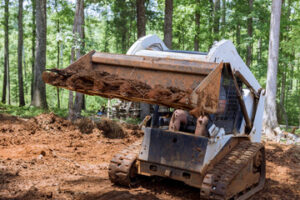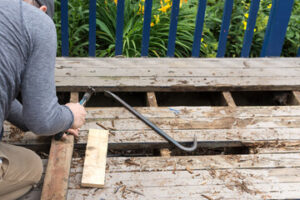Masonry structures like brick walls and foundations are critical to the structural integrity of a building. But over time, they can become damaged and deteriorate.

When this happens, it’s important to hire a contractor who specializes in Masonry Restoration and repair. A specialized contractor will have extensive knowledge of construction techniques that have been used through the years.
A well-maintained masonry structure can boost your property value. It attracts prospective buyers and tenants, and it signals to them that you have a strong commitment to your property’s maintenance. Studies have shown that properties with attractive curb appeal are more likely to sell or rent at higher prices than those with unattractive exteriors.
Fortunately, masonry is a cost-effective way to enhance the curb appeal of your residential or commercial property. With a range of design possibilities and material options, masonry upgrades can elevate the aesthetic of your landscape, whether you’re looking to create a welcoming pathway or add character to your facade.
Masonry restoration also offers functional benefits that improve the durability and longevity of your masonry features. For example, repairing brick walls with tuckpointing or repointing restores the integrity of the structure by filling in cracks and weak mortar joints. These repairs also prevent water from seeping through the brick and causing further damage, such as mold growth, rotting wood, and weakened paint.
One of the best ways to boost your curb appeal is with a beautifully paved walkway or driveway. Whether made of natural stone pavers or bricks, these surfaces are visually appealing and durable, offering a classic look that never goes out of style. Plus, they can be installed in a variety of patterns and colors to complement the style of your home.
A deteriorating façade can make your property look outdated and run-down, which can deter potential buyers. Investing in a masonry restoration project can ensure that your property’s exterior looks its best, so you can draw in interested buyers and command the highest sale or rental price. If you have any masonry on your property that is displaying signs of damage, such as cracked bricks, crumbling mortar, or stained surfaces, consider having them professionally evaluated and restored by a reputable masonry company like BEI Exterior Maintenance. Our experienced masons can repair damaged masonry quickly and effectively, restoring it to its original beauty. Contact us today to learn more about our masonry restoration services.
Strengthens the Structure
Masonry Restoration is more than repairing or cleaning brick structures, it’s about protecting the structural integrity of a home or business. Weathering, age-related deterioration and pest damage can lead to cracks in mortar joints and loose bricks, which may be hazardous if left untreated. By scheduling regular masonry repair services, you can prevent costly structural compromise and ensure the longevity of your property’s masonry structure.
Masonry restoration is often a more extensive process than traditional repairs, restoring brick surfaces to their original condition and adding new elements that improve functionality or aesthetics. This may include repointing mortar, sealing and waterproofing, installing concrete reinforcements or introducing new anchor points, and fortifying and enhancing the overall strength of the masonry structure. Often, these improvements are necessary to meet building codes and ensure the safety of individuals who use the building or structure.
Sustainable masonry restoration practices prioritize long-term durability and ecological responsibility. This means using low-VOC cleaners, locally sourced materials and energy-efficient construction methods that reduce a structure’s carbon footprint. In addition, a thorough life cycle cost analysis (LCCA) typically uncovers substantial savings over the structure’s lifetime compared to alternative modern materials.
In addition to the environmental benefits of minimizing transportation distances, local material sourcing supports multi-generational masonry industries and sustains traditional craftsmanship skills. It also provides the assurance that the masonry materials used in your project are historically appropriate for your region’s architectural heritage, making them more compatible with historic buildings and monuments.
The best masonry contractors are dedicated to the preservation of historical architecture and know how to treat it with respect. These craftspeople have experience working with a wide variety of structures and can make recommendations about how to best preserve and restore your masonry structure. Choosing a specialized contractor can save you time, money and stress by saving you from unnecessary repairs and maintenance down the road.
A reputable masonry restoration contractor will be able to provide detailed written estimates that detail all work to be completed and the expected timeline for completion. This helps you avoid unexpected costs and surprises, which is especially important when dealing with older or historic structures.
Preserves the Historic Value of the Property
Many historic buildings are culturally significant, and masonry restoration can help preserve their integrity. Masonry restoration focuses on preserving craftsmanship and respecting the past, and it can also improve energy efficiency. A well-maintained masonry building can withstand harsh weather conditions and prevent moisture damage, resulting in a stronger and more durable structure. It can also increase property value by improving the overall appearance and adding a sense of character.
Masonry restoration can include a number of repairs and preservation methods, including repointing, replacing damaged bricks, and adding new mortar. The goal is to preserve the historical integrity of the building and bring it back to its original condition. The repair process is a complex task that requires the skills of an experienced masonry company to ensure that it is done correctly. The process involves carefully inspecting the building for underlying damage, creating a detailed restoration plan, and executing each step with precision.
Historic masonry structures often have unique details that add to their charm and aesthetics, such as ornate brick patterns, carved stone details, or decorative elements. During the repointing process, the old mortar is removed and replaced with new mortar that matches the original in color and texture to maintain the historical appearance. Similarly, replacing damaged bricks can be done with matching new bricks to keep the appearance intact.
Some historic buildings need specialized reinforcement to address issues such as shifting foundations or weak structural components. Techniques like underpinning and masonry ties can strengthen the structure without compromising its historic integrity.
It is important to regularly inspect historic buildings for signs of damage, such as cracks or a change in the color of the masonry. These issues should be addressed promptly to prevent them from worsening. Regular inspections can also help prevent the need for costly repairs in the future and can provide a better picture of the health of the building.
Saves Money
Masonry Restoration involves the repair of bricks, stones like limestone and marble, and other materials used to build and clad buildings. These materials are often prone to damage from weather, pollution and other environmental factors that cause them to break down over time. Regular maintenance is essential to keep these structures looking their best and working as efficiently as possible.
The first benefit of masonry restoration is that it saves money. Deteriorated masonry is a visual distraction that lowers curb appeal and sends a message about the overall care of a building. It can also lead to expensive structural damage, if left unattended. Regular masonry inspections help identify issues before they become worse, and addressing these minor repairs prevents costly replacements in the future.
Aside from saving money on repairs and maintaining a better appearance, masonry restoration can actually increase the value of a property. When a building’s exterior is well-maintained, prospective buyers will be more interested in the property, making it easier to sell in the future. For historic properties, a professional masonry restoration can preserve the historical integrity of the structure while improving its appearance.
Masonry restoration can involve techniques like tuckpointing, repointing, Dutchman repairs and consolidation. Tuckpointing involves repairing mortar joints between bricks, while repointing is the process of completely removing and replacing deteriorated mortar. Dutchman repairs use matching mortar to fill small cracks and holes, while consolidation strengthens and stabilizes weakened masonry. The re-application of protective coatings can also prevent further deterioration and damage.
In addition, a professional masonry restoration can address vulnerabilities that contribute to water infiltration and deterioration. For example, lintels support the weight above windows and doors, and are prone to corrosion from exposure to water. Identifying and repairing these weaknesses will help protect the integrity of a building’s facade as well as its interior and reduce energy costs.
When choosing a contractor for your masonry restoration project, consider their expertise and experience in the type of work you need done. A specialized masonry contractor will know how to repair your masonry quickly and effectively while preserving the overall look of your structure. They can also offer you a variety of options for color and texture matching, which will ensure that your repaired masonry looks natural and matches the existing material.


